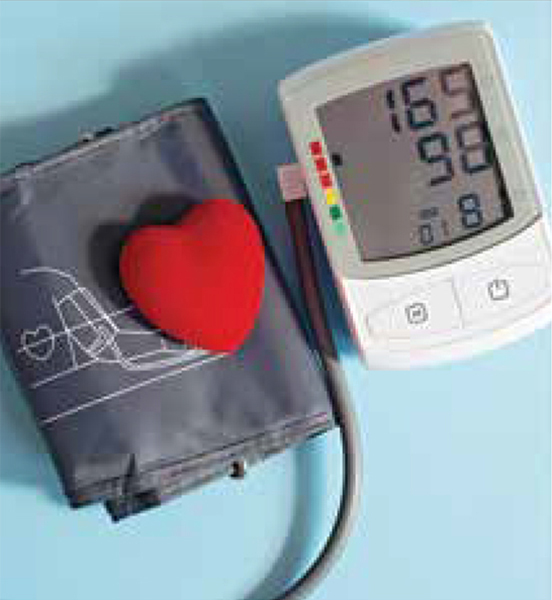The global prevalence of chronic hypertension continues to rise. The main goals of treating hypertension are to ensure good blood pressure control and to prevent hypertension related adverse cardiovascular outcome. It is estimated that >60 per cent of hypertensive patients still have their blood pressure out of optimal control. The European Society of Cardiology guidelines have provided a strong recommendation to start anti-hypertensive medication with single pill combination as a measure to improve adherence and effective blood pressure control.
It is estimated that more than 1.4 billion people are suffering from chronic hypertension in the world (two-third of them are living in low- and middle-income countries). Hypertension is still the most common modifiable risk factor for cardiovascular diseases worldwide. No significant improvement in the rates of hypertensive control has been observed over the last decade. Blood pressure control rates are as low as 17 per cent to 31 per cent in patients diagnosed with hypertension in high income countries, control rates are likely worse in low and middle income countries.
High blood pressure is the leading global cause of premature death, being responsible for around 10 million deaths per year. Furthermore, the global prevalence of hypertension of at least 140 mmHg continues to rise. Hypertension also becomes progressively more common with advancing age, with a prevalence of higher than 60 per cent in people 60 years or older. Therefore, as the population ages, it is predicted that the impact of arterial hypertension will rise further, if management is not optimised.
The “Build and Blood Pressure Study”, carried out on almost 5 million adults between 1934 and 1954, published in 1959, showed a strong direct relationship between high blood pressure and risk of clinical complications and death. In the 1960s, these findings were confirmed in a series of reports from the Framingham Heart Study. The first comprehensive guideline for detection, evaluation, and management of high BP was published in 1977. Since that, a series of Joint Committee guidelines were published to assist the practice community and improve prevention, awareness, treatment, and control of high blood pressure.

According to most international guidelines, including the European Society of Cardiology (ESC)/European Society of Hypertension (ESH) 2018 guidelines for the management of arterial hypertension in adults, aged at least 18 years, hypertension is defined as a systolic blood pressure at least 140 mmHg and/or a diastolic blood pressure at least 90 mmHg. However, in 2017, joint societies in the United States of America, including the American Heart Association (AHA)/American College of Cardiology (ACC) lowered the level at which ‘hypertension should be defined, to at least 130/80 mmHg. This consequently raised the prevalence of patients with hypertension according to this updated definition. The ESC/ESH noted during the release of their guidelines in 2018 that the majority of patients do not achieve blood pressure less than 140/90 mmHg, and therefore their focus was to improve goal attainment, rather than to lower the definition of blood pressure beyond the traditional definition of hypertension (i.e., blood pressure at least 140/90 mmHg). Normal blood pressure in persons aged less than 65 years according to both guidelines is, however, defined at a similar level, either as blood pressure 120–129/ 80–84 mmHg in ESC 2018 or as less than 120/80 mmHg in AHA 2017. Studies have demonstrated that attainment of ‘normal’ blood pressure reduces the risk of future cardiovascular adverse events. However, goal attainment remains suboptimal worldwide, even using a goal of less than 140/90 mmHg.
In the past decade, guidelines provided measures to overcome the challenge of widespread suboptimal blood pressure control. Among these measures, guidelines from the ESC/ESH stated that the majority of patients with arterial hypertension initiate two antihypertensive agents to reduce blood pressure quickly towards the therapeutic target. Similarly, the 2017 ACC/AHA guidelines also recommend initiation of two antihypertensive therapies for patients having their blood pressure more than 20/10 mmHg above the target.
The 2018 ESC/ESH guidelines identified that poor adherence to treatment and physician clinical inertia (i.e., lack of physician’s plan and action when the patient’s blood pressure is uncontrolled) are common causes of poor BP control. Overall, more than 50 per cent of patients might fail to adhere properly to their prescribed antihypertensive medications. Moreover, it is estimated that after 1 year, approximately 40 per cent of patients with hypertension may stop permanently their initial drug treatment. The relationship between poor adherence and high cardiovascular risk has been widely reported. A recent meta-analysis demonstrates that SPC therapy leads to improved adherence and persistence compared with free individual drug therapy. A recent meta-analysis, involving 18 studies and 13,56188 patients with hypertension showed that patients with poor adherence to antihypertensive medication had a significantly increased risk of stroke events compared to those with good adherence. A very recent meta-analysis of 44 studies has demonstrated that SPC therapy leads to improved adherence, persistence and blood pressure control compared with free individual drug therapy.
Adherence is considered to be multifactorial. To achieve a greater adherence rate; different factors should be taken into account. These factorswould include number of drugs used / frequency of daily doses and patient’s beliefs, lifestyle, personality, and comprehension. Several strategies have been proposed to improve adherence to antihypertensive medications like drug regimen simplification, education and counselling on home blood pressure monitoring, options to reduce costs, and use of allied health professionals and facilities. Single pill combinations (SPCs) therapy is an approach toward regimen simplification strategy. SPCs could offer a number of advantages versus free individual drug combinations given separately, as it may improve tolerability, reduce pill burden, lower medical costs and resource utilisation, reduce physician clinical inertia, and the most important advantage would be to improve patient adherence to medication. So, SPCs would have the potential to significantly improve the overall blood pressure control rates in treated patients.
The ESC/ESH 2018 guidelines strongly recommend the use of a SPC to simplify drug regimen as a strategy to improve antihypertensive treatment adherence. However, 2017 ACC/AHA guidelines recommend that the initiation of two antihypertensive drugs can be given either as two pills in a free combination or as an SPC therapy. SPC option is still not recommended at all in the National Institute for Health and Care Excellence guidelines.
Of interest, recently the World Health Organization (WHO) has added, for the very first time, a SPC comprising two antihypertensive medications to the WHO Essential Medicines List, thereby acknowledging that the use of SPC is the emerging best practice for safe, effective, rapid, and convenient hypertension control worldwide
The ultimate goal of antihypertensive therapy is good blood pressure control to reduce the risk of stroke, cardiovascular disease, and renal disease.
Achieving good adherence in the long-term is a challenge. Different factors contribute to good adherence. SPCs should be used in combination with other strategies to improve adherence. Patient beliefs and local concepts still remain obstacles to proper adherence in patients with hypertension. Patients often do not feel unwell and ask why it is necessary to continue taking treatment for long time. Doctors should not forget that combating/discussing patients’ beliefs and thoughts during his visits to the clinic could be an effective strategy to improve adherence to antihypertensive treatment. Other strategies to improve adherence and can be used in conjunction with SPCs, are like home blood pressure monitor, reminder pill boxes, integrated care, and patient preference and sharing in decision making.

Really, reducing pill burden would motivate patients to improve their medication adherence and persistence to therapy, which in turn may have resulted in better blood pressure control and reducing cardiovascular outcome at long term. However, physicians might still have some concerns when prescribing SPCs therapies, including risk of treatment duplication, and the limited ability to individually titrate different components of the single pill with the incidence of any adverse event. As such, further clarification of the benefits is needed for healthcare professionals.
Despite that, meta-analyses have demonstrated benefits of SPCs at achieving good adherence and better blood pressure control and the recent guidelines which recommend SPC over freely individual drug combinations. Further studies are still needed to use ambulatory blood pressure monitor and/or home blood pressure monitor to truly determine the effect of SPC therapy on blood pressure control and cardiovascular outcomes compared with free individual combination therapy.
Regarding the cost issue, concerns have been raised like having multiple dosage strengths and logistic problems for pharmacies having to stock the multiple combinations of the same two drugs. Furthermore, in different countries, SPCs are still more expensive than the generic forms of the individual drugs, and the cost of medication is another important determinant of longterm adherence to therapy. Regarding this point, multiple studies showing that SPCs are linked to significant reductions in medical resource utilisation and are cost-effective when compared with free individual combinations. Mainly through reduction of long-term complications and adverse cardiovascular outcome assumed by better adherence and better pressure control by SPC. So, reductions in total medical costs associated with SPCs at long term more than offset the higher drug costs.
Important points to remember: